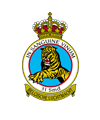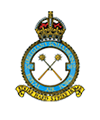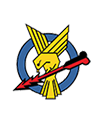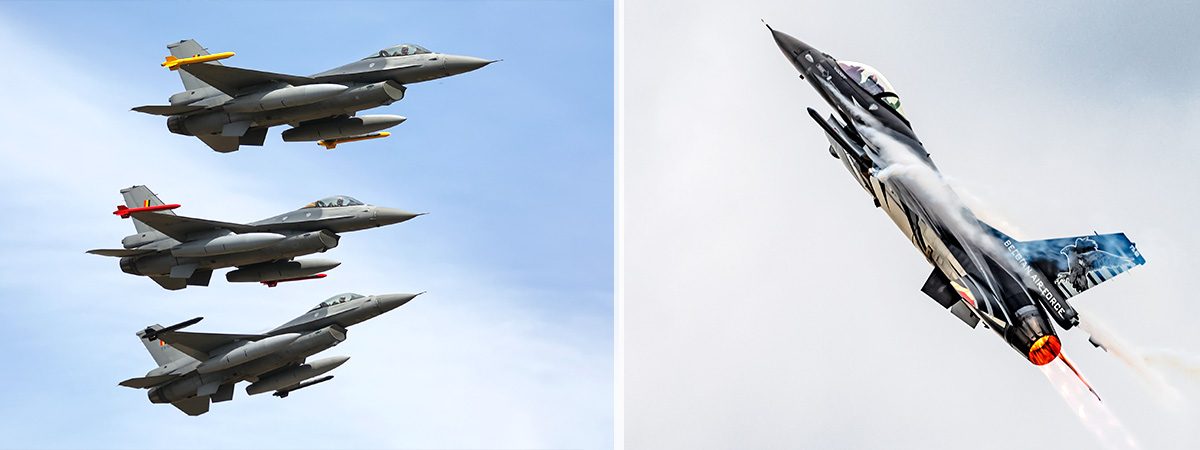
The F-16 MLU (Mid-Life Update) is a 4th generation multirole fighter-bomber aircraft. The aircraft has a variety of sensors and weapons to perform reconnaissance assignments, precision bombing and aerial combat. The F-16AM has been actively deployed in numerous operations in recent years and is therefore the main force of our Belgian Air Force.
SPECIFICATIONS
Manufacturer: Lockheed Martin (Developed byGeneral Dynamics)
Length: 15,09m
Height: 5,09m
Wingspan: 10,00m
Weight: 12 000Kg (zonder externe bewapening of brandstoftanks), maximaal 17 000Kg (met externe bewapening en/of brandstoftanks)
Fuel capacity: 4000L (zonder externe brandstoftanks), 6700L (met externe brandstoftanks)
Fuel consumption: Gemiddeld 3300L/Hr bij het uitvoeren van tactische manoeuvres
Engine: Pratt and Whitney F100-PW-220E turbofan
Power: 6 800Kg stuwkracht. 11 400Kg stuwkracht met naverbrander
Top speed: Mach 2,05 (2500Km/hr) op grote hoogte, 1500Km/hr op lage hoogte
Range: 2700Km
Service ceiling: 17Km
HISTORY
The F-16 was developed by General Dynamics in the 60s and 70s. Under the Multi National Fighter Program (MNFP: Norway, Denmark, the Netherlands) concept, Belgium decided to replace the outdated F-104 “Starfighter”. The aircraft were built in Belgium and the Netherlands by SABCA and Fokker respectively. On January 29 1979, the first F-16 built in Europe was delivered to the Belgian Air Force. Belgium employed a total of 160 F-16s delivered between 1979 and 1991. Restructuring, budget cuts and attrition have led to a remainder of 45 F-16As and 9 F-16Bs today.
MID-LIFE UPDATE (MLU)
In 1987, a possible replacement for the F-16 was already being considered. In budgetary terms, this proved impossible for many MNFP partners. Hence, it was decided to implement a radical modernization, called the Mid-Life Update. Belgium modernized 90 aircraft to the MLU standard. Since the introduction of the Mid-Life Update, various modifications have been implemented. This is necessary to continue to respond to changing threats.
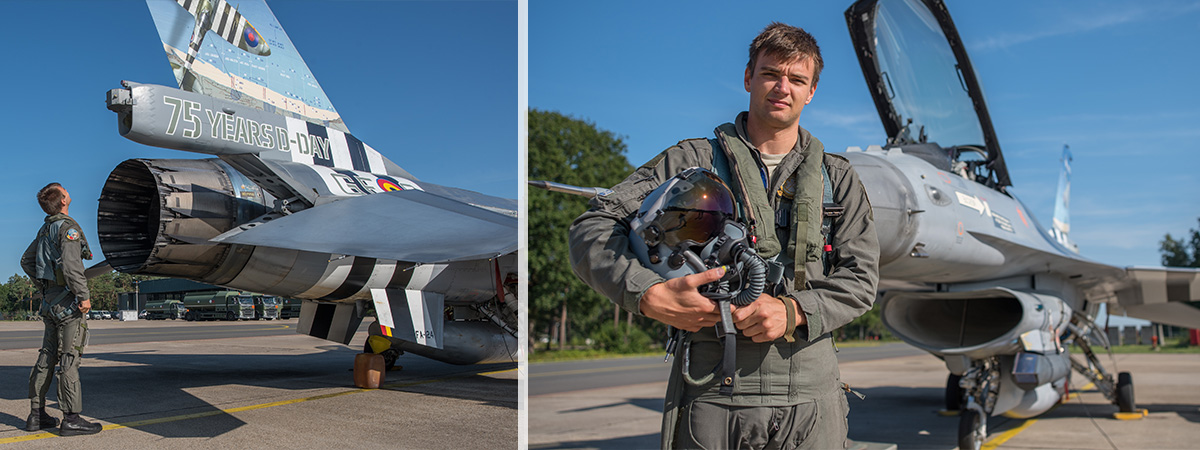
F-16AM ARMAMENT
The F-16AM is a multi-role fighter aircraft. This means that the aircraft can perform both air combat and precision bombing. Therefore, we distinguish on two types of armament. We have missiles that allow the targeting of aerial targets and on the other hand we have smart bombs to carry out precision bombing.
AIR-AIR ARMAMENT
The AIM-120 AMRAAM (Advanced Medium Range Air to Air Missile) is a medium-range missile that is initially fired at its target using the F-16 radar. Then a mini-radar, built into the nose of the missile, takes over the guidance. This allows the pilot, shortly after firing, to turn away from the hostile aircraft and thus stay out of reach of the enemy’s weapons
The AIM-9X is an infrared guided missile. Unlike the AIM-120, this missile does not have a radar, but searches for the heat sources from an enemy aircraft. The maneuverability of this missile combined with the high-tech helmet of the pilot (JHMCS) ensure that this rocket is extremely effective for close range air-to-air combat.
Furthermore, the F-16 has a 20 mm on-board gun that can be used against both aerial targets and ground targets. The "M61A1 Vulcan" can be loaded with 511
20mm ammunition. The cannon fires 100 bullets per second. When the bullets hit the target, they explode and generate the desired effect.
AIR-GROUND ARMAMENT
For attacking ground targets, the Belgian Air Force has a variety of smart weapons with different guidance systems: GPS or laser guidance or a combination of both. There are as well different weight classes: 250 lbs, 500 lbs and 2000 lbs. These weapons are equipped with programmable fuses to generate the desired effects to the target. Smart weapons are essentially free-fall bombs equipped with a laser and / or GPS sensor..
Laser guided weapons (GBU-12 / GBU-10 / GBU-24)
When using these weapons, the pilot will identify the target by means of the targeting pod carried by the aircraft and then illuminate the target with a laser. The weapon will fly towards the reflected laser energy. Laser-guided weapons can only be used in relatively good weather conditions because the pilot must be able to see his target to use the laser effectively.
GPS guided weapons (GBU-38 / GBU-31)
These weapons are equipped with a GPS antenna. The pilot loads the coordinates of his target into the weapon before firing it. Based on GPS signals, the weapon knows perfectly where it is located and can make the necessary adjustments to reach its target. GPS-guided weapons can be used in all types of weather conditions. Furthermore, the pilot can also program the angle, direction and speed at which the weapon flies to its target. All of these factors are important to generate the desired effect on the target.
GPS and Laser guided weapons (GBU-54)
These weapons are also called "dual-mode weapons" because they can find their target by homing in onto the reflected laser energy, or by using the GPS. The combination of both techniques ensures that this weapon is extremely precise when attacking targets that are moving at great speed. It also provides the necessary flexibility when the pilot does not know in advance what his target will be during a mission.
GBU-39 SDB “Small Diameter Bomb”
The first weapons of this type were delivered in early 2019. This relatively small GPS-guided bomb with a weight of 110 kg is distinguished from the other GPS-guided weapons by its small but extremely effective, explosive charge (17 kg) and by its large range. When releasing the bomb, wings unfold which ensure that this weapon can fly more than 100 km. This allows the pilot to attack his target without coming into the range of enemy defense systems. The use of a small explosive charge ensures that potential collateral damage is reduced. Because of its small size, an F-16AM can carry up to eight of these SDBs.
F-16AM AVIONICS
The F-16AM is much more than just an airplane equipped with bombs and missiles. All kinds of sensors and high-tech equipment ensure that the aircraft can carry out its mission in all weather conditions, day and night.
TARGETING POD - TGP
The F-16 targeting pod, also known as the "Sniper", is mounted just next to the air intake and functions both day and night. In the cockpit, the pilot can see the image of the sensor on his screens. The camera is "geo-stabilized" and therefore remains focused on the same point on the earth, despite the high speed and altitude of the aircraft. The pilot can control the camera using his stick. The laser for guiding laser-guided weapons is integrated in the TGP.
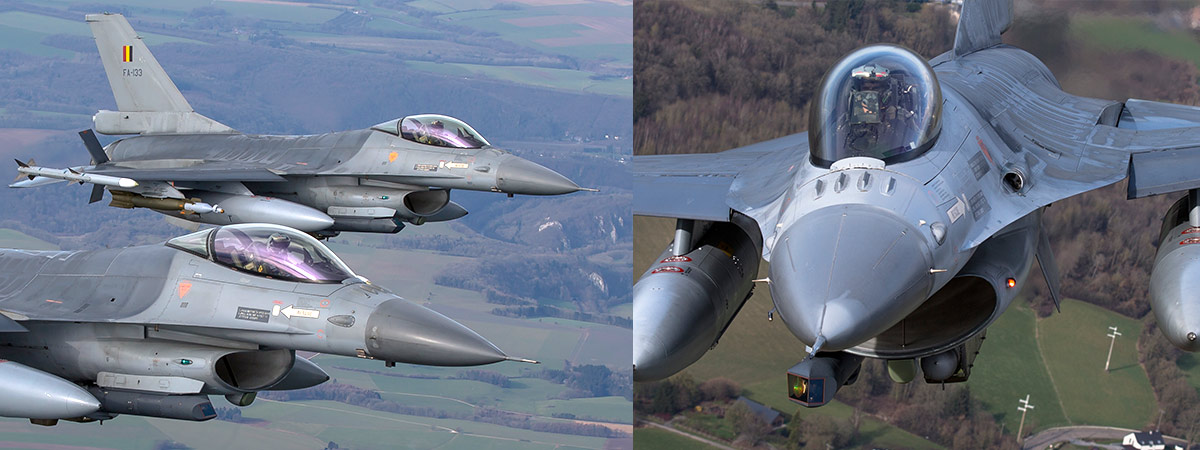
An additional functionality of the TGP is the reconnaissance function. The camera can take a detailed photo of a large predetermined area. Then a specialized team will analyze these images after flight.
LINK16
An F-16 pilot will never perform his mission alone. He usually flies within a large-scale operation in cooperation with many other players. To be able to share information efficiently and to maintain a maximum overview of the entire airspace, the pilot will connect to the Link16 network. This network offers countless possibilities. For example, the pilot can see at any time where other aircraft are located, how much armament and fuel they still have on board, but also which enemy targets they detect and are firing at.
JHMCS (JOINT HELEMET MOUNTED CUEING SYSTEM)

The "Joint Helmet Mounted Cueing System" helmet projects all kinds of information in front of the eyes of the pilot. This way he no longer has to look into the cockpit to find his speed, height and weapon parameters. The helmet also allows other systems such as the radar, camera and missiles to follow the pilot's head movements. Using the HMCS, sensors can be aimed very quickly in the direction of a potential target in the air or on the ground.
NVG (NIGHT VISION GOGGLES)
Night vision devices, called NVGs, ensure that missions can also be carried out at night. The pilot looks through a pair of binoculars that amplify the remaining light. Like this, he gets an image in different shades of green and can see through the dark.
SATCOM (SATELLITE COMMUNICATION)
In the light of improving communications, a new antenna was recently installed in the F-16AM. Until now, a signal could only reach the receiver when it was in direct view, also called "line of sight". This updated antenna makes it possible to send encrypted communication via satellites. Having this equipment means the pilot can also communicate with the command center when flying deeply within enemy lines
F-16AM ELECTRONIC WARFARE
To survive in an extremely hostile environment it is important that the pilot is informed when he is detected or being shot at by an enemy system. The F-16AM is therefore equipped with various warning systems.
The Radar Warning Receiver (RWR) will alert the pilot when he is spotted by an enemy radar system. Visual and audio signals indicate where the hostile radar system is located. By using an electronic jammer that can be taken externally to the aircraft, it becomes extremely difficult for the enemy radar system to continue following the F-16AM.
The Missile Warning System (MWS) consists of various sensors that can detect an IR-guided missile. Visual and audio signals in the cockpit alert the pilot. Releasing flares that burn extremely hot can mislead the missile and redirect it away from the F16.
F-16AM NEAR FUTURE
The next software update is currently in full development. This update brings many improved functionalities, but also allows the integration of a number of new systems such as the Scorpion helmet, 3D audio and an improvement of the electronic warfare system.
SCORPION
The JHMCS helmet will be replaced by the Scorpion helmet. Apart from a number of logistical advantages, this helmet can easily be used in combination with night vision. This was somewhat harder to realize with the JHMCS helmet. Despite the fact that the total weight of these helmets is just under 2 Kg, acceleration forces of up to 9 G can represent a huge physical burden for the pilot. An improved weight distribution with the Scorpion helmet makes it possible to absorb these forces better.
3D AUDIO EN ACTIVE NOISE REDUCTION
Inside the cockpit of an F-16, there is a lot of noise. It is therefore extremely important that the pilot wears the correct hearing protection. A tailor-made helmet provides a first sound buffer. Furthermore, every pilot has earplugs with built-in communication. The next step is the integration of "Active Noise Reduction" in which environmental sounds are actively reduced. Simultaneously with this modification, "3D audio" will be included in the aircraft. A relatively small upgrade with a number of benefits. For example, when an enemy missile is fired at the F-16, an alarm signal will sound in the helmet. With the use of "3D audio", this alarm signal will sound from the current direction of the threat. The pilot can thus, based on sound, look in the direction of the threat and respond even more efficiently.
F-35 LIGHTNING II
At the end of 2018, after an extensive and careful comparison analysis, the Belgian government decided to replace the F-16 MLU with the American F-35A Lightning II, built by Lockheed Martin.
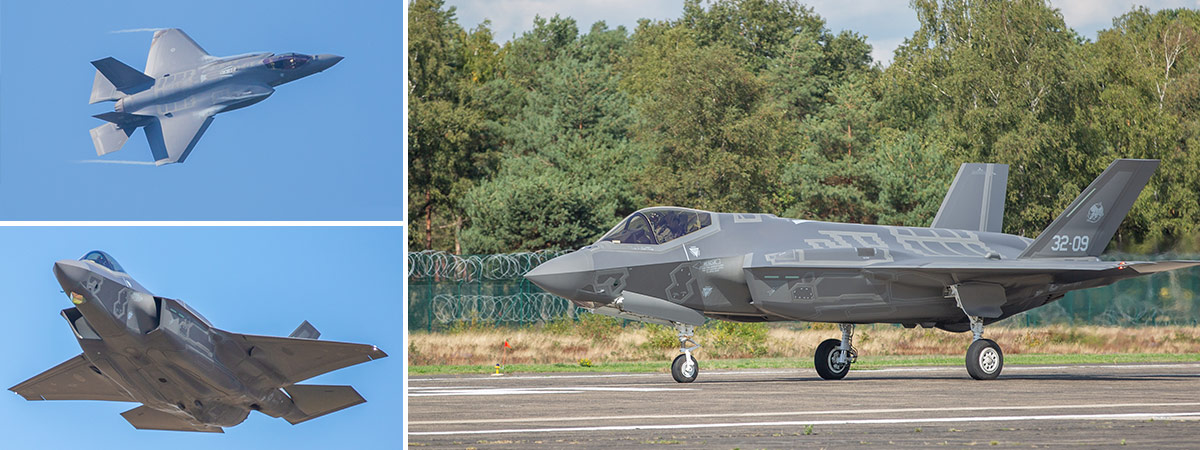
Despite the fact that our current F-16 MLU is still being modernized, we are reaching a limit with the capabilities of the aircraft. Furthermore, new threats mean that we must be ready for tomorrow. "Ready now, preparing for the Future".
The F-35 is a 5th generation multi-role fighter aircraft. The aircraft is characterized by its stealth capabilities, making it more difficult to be detected by enemy radar systems. Where an F-16AM has to carry all of its armament under the wings, the F-35 carries its weaponry internally to retain its stealth capabilities. If the stealth capabilities are less important, additional armament can also be carried under the wings.
Belgium bought the F-35A variant. There is also a B variant that can take off and land vertically. The C variant with a reinforced landing gear to be used on board of aircraft carriers.
Delivery of the first Belgian F-35As is currently planned for 2023. The first aircraft will be used in the United States for the training and conversion of pilots and technicians. The very first F-35As in Belgium are not expected until 2025.
As the first F-35As are delivered, the F-16s will be systematically withdrawn from circulation. The last Belgian F-16 is planned to stop flying around 2028.




